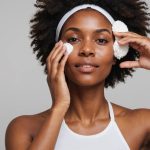Understanding Setting Powder
Setting powder is an essential component in makeup application, primarily designed to prolong makeup longevity and provide oil control. This fine, often translucent powder is applied after foundation to lock the product in place, ensuring your makeup lasts throughout the day.
One of the key benefits of using setting powder is its ability to control oil, thereby giving your skin a matte finish. This is particularly advantageous for those with oily skin types, as it helps absorb excess shine and reduces the need for frequent touch-ups. Additionally, setting powders contribute to a smooth, even skin texture by minimizing the appearance of pores and fine lines.
Additional reading : The Essential Handbook for Selecting Premium Plant-Based Protein Remedies for Hair Restoration
Common ingredients found in setting powders include talc, which aids in oil absorption, and silica, known for its light-diffusing properties. Some formulations also incorporate minerals or pigments to enhance skin-friendly benefits. Depending on individual needs, setting powders are available in various forms, such as loose powder for a more natural finish or pressed powder for portability and ease of use.
Understanding these elements can guide you in selecting the most suitable setting powder to complement your makeup routine and achieve lasting results.
Have you seen this : The future of fragrance: robertet’s commitment to nature
Exploring Setting Spray
Setting spray has garnered popularity in the beauty world for its unique ability to influence makeup finish differently than setting powder. Unlike powders, which focus on oil control, setting sprays are liquid formulas that help seal makeup in place, adding hydration and creating a dewy finish. This is particularly advantageous for those with dry or combination skin types seeking a fresh, glowing appearance.
While setting powders aim to mattify the skin, setting sprays bring different benefits. They incorporate ingredients such as glycerin, which provides moisture, along with polymers that form a thin protective film over the skin to aid in makeup longevity. These sprays can also contain extracts like aloe vera, enhancing their hydrating properties further.
There are many formulations designed for varied skincare needs. For example, sprays targeting oily skin use antiperspirants to control shine, while sprays for sensitive skin are alcohol-free to prevent irritation.
Using a setting spray can extend the wear of makeup without altering its physical texture, providing an accessible, quick step to refresh and hydrate the skin throughout the day while preserving the desired look.
Expert Opinions on Makeup Longevity
In the beauty industry, expert opinions weigh heavily on the judicious use of setting products for makeup longevity. Top makeup artists emphasize using setting powder for oily skin due to its unparalleled oil control, resulting in a matte look. Conversely, setting sprays are recommended for those with dry or combination skin, providing hydration and a dewy makeup finish.
Professionals advise evaluating your skin type before choosing a product. They stress that setting powders, with their talc and silica ingredients, efficiently minimize pores while ensuring makeup stays put. On the other hand, setting sprays incorporate glycerin and polymers, forming a protective layer that locks in hydration.
For a harmonious balance, some artists propose combining both methods: apply setting powder to mattify and control shine, then mist with setting spray for hydration and a natural finish. This approach caters to diverse skincare insights and furthers the longevity of the makeup.
Ultimately, expert recommendations hinge on personal preference aligned with skin characteristics. Hence, understanding these nuances can significantly enhance your makeup’s longevity while maintaining skin health, whether you prefer a matte or dewy outcome.
Tips for Application
For mastering makeup application techniques, it’s crucial to consider proper methods for both setting powders and sprays. When using setting powder, start by applying it to areas prone to oiliness. This technique ensures effective oil control and enhances makeup longevity. Use a fluffy brush or blending sponge, gently pressing the powder onto the skin for optimal absorption and a smooth finish.
On the other hand, setting spray should be misted evenly over the face from a reasonable distance. Hold the spray bottle about 8-10 inches away to create a fine mist, covering the makeup without causing smudges. For enhanced makeup stay, layer the spray by letting each coat dry before adding another.
Expert advice often highlights combining these methods for resilient makeup. Apply setting powder to control shine initially, followed by a setting spray for hydration and a radiant finish.
Makeup artists consistently recommend experimenting with different combinations to discover what best suits your skin type and desired makeup effect. With careful application and a blend of techniques, you can effectively enhance makeup longevity and maintain a fresh look throughout the day.
Comparative Analysis: Setting Powder vs. Setting Spray
When considering makeup longevity, understanding the pros and cons of using setting powder versus setting spray is crucial. Each product offers unique benefits based on skin type and personal preferences.
Pros of Setting Powder
- Oil Control: Highly effective in managing oil production, resulting in a matte finish.
- Pore Minimization: Ingredients like talc and silica help blur fine lines and pores, offering a smooth complexion.
Cons of Setting Powder
- Dryness Potential: Those with dry skin may find setting powders exacerbate flakiness.
- Cakey Appearance: Excessive application can lead to a heavy, unnatural look.
Pros of Setting Spray
- Hydration: Ideal for dry skin, with ingredients like glycerin adding moisture for a dewy finish.
- Lightweight Application: Provides a natural look without altering makeup’s texture.
Cons of Setting Spray
- Limited Oil Control: May not be suitable for very oily skin as it lacks the oil-absorbing properties of powders.
Deciding when to choose powder versus spray can depend on situational appropriateness. For daytime wear requiring oil control, powders may be preferable. Conversely, sprays cater to evening looks needing freshness and a hydrated glow. Choosing between these products revolves around personal needs and the desired makeup finish.
User Experiences and Testimonials
Users often provide insightful testimonials on how setting powders and sprays impact makeup experiences. Individuals with oily skin frequently commend setting powders for their oil control and ability to maintain a matte finish throughout the day. Many users highlight their satisfaction with how setting powders minimize pore appearance and reduce shine, which aligns with their personal preferences for a polished look.
Conversely, setting sprays receive praise for enhancing hydration and achieving a dewy makeup finish. Consumers with dry or combination skin express appreciation for the light, refreshing mist that setting sprays provide. These users often mention how setting sprays prevent the cakey appearance that powders sometimes induce, making them a preferred choice for creating a natural, radiant glow.
In terms of overall satisfaction, many consumers find success in product combinations, using both setting powders and sprays to cater to specific skin needs. This approach allows for a customizable routine that maximizes makeup longevity and ensures comfort throughout various weather conditions and occasions. User reviews reveal that understanding one’s skin type and desired finish can significantly enhance day-to-day makeup application, fostering loyalty towards these essential beauty products.











